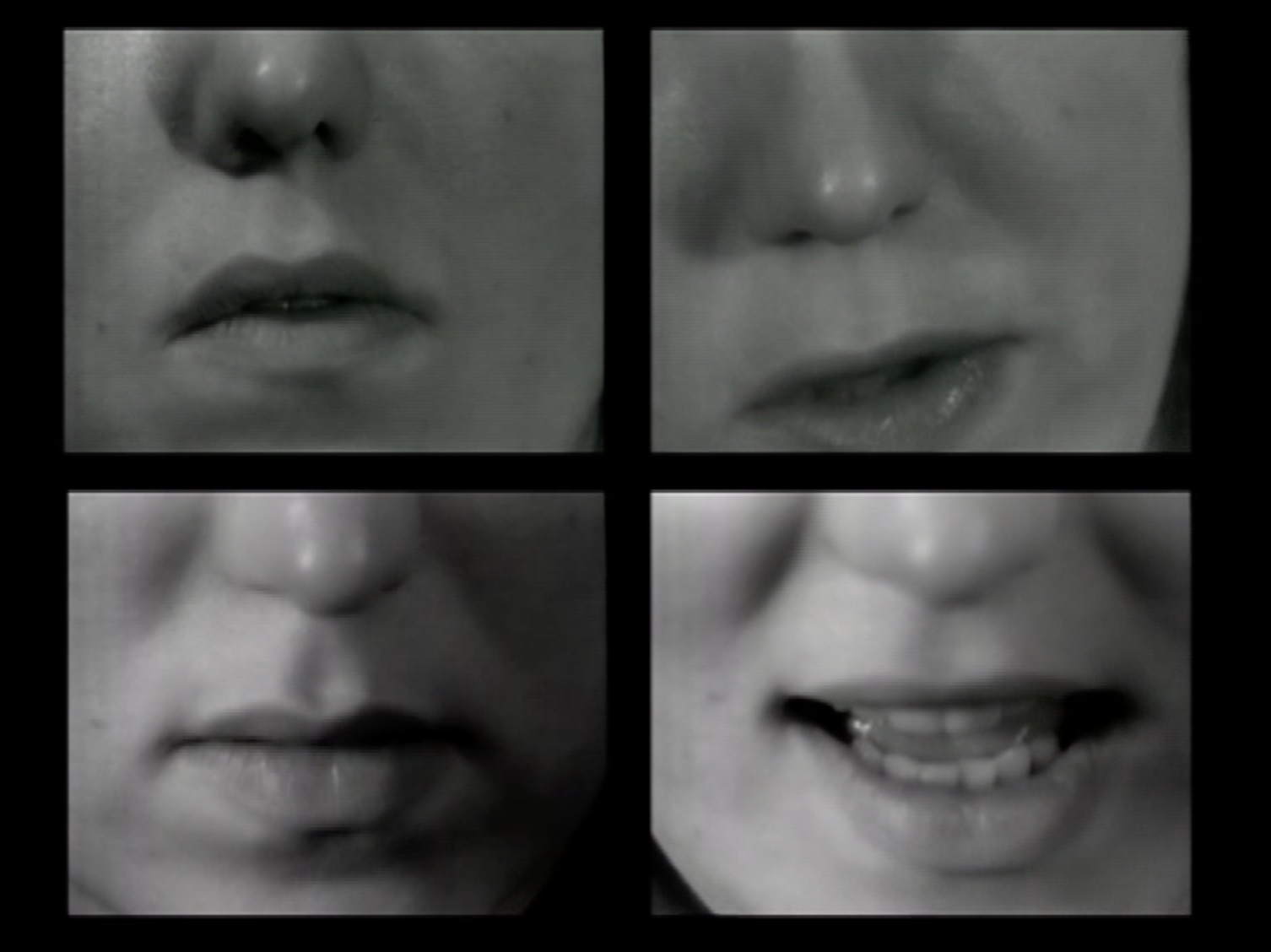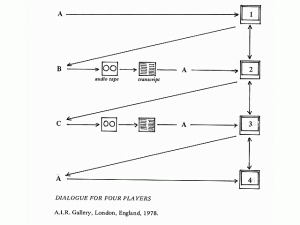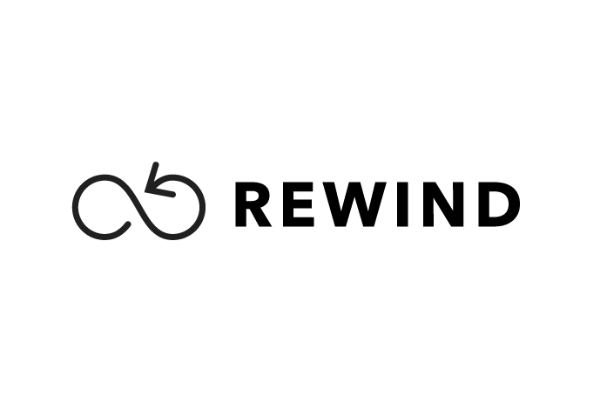Dialogue For Four Players (1978)

Creator:
Partridge, StephenContributor(s):
-
Vicky Robinson
-
This work is part of the rewind archive.
Duration: 16 minutes
Year: 1978
Original formats:1/2 inch EIAJ reel-to-reel
Media types:Video
Type of work:Installation
Multi Channel work
Funding source: Arts Council of Great Britain, AIR Gallery London
First exhibited: AIR Gallery London, March 1978
Technical details: 4 channel, 4 x monitors
‘Dialogue for four players is a video playback installation by Steve Partridge at the AIR Gallery during Mid-March. Four Monitors stand in a square facing the viewer in a darkened room: their own light is the only illumination. Each monitor is replaying a different tape; each showing the lower half of (the same?) woman’s face, thus each speaks its own contribution to the dialogue.
The Four tapes are fifteen minutes long, they are played simultaneously, and quickly one becomes aware of a structure of some sort. The mouths speak one by one (at first), and the apparent structure is some (randomised) orchestration of the times and durations of each mouth’s periods of speech and silence.
The dialogue begins with a self referring statement by one of the mouths: I was inhibited by the situation, by the technology, by the lack of instruction, by the lack of concept of the idea…
The mouths contradict one another in these terms, one talks about the ‘meat’ in the piece and how to ‘grab it’. Another answers: the meat to grab is in the process of this happening, there doesn’t necessarily have to be an overt content…to make it meaningful. This is a fairly crucial statement inside the piece. The process referred to is obviously at work but its precise nature is unknown What is or was the real-time relationship of the four tapes/mouths, and how is the situation generated whereby one person is arguing with herself?
It is possible to deduce a number of structures for this installation/situation. With the clue of Partridge’s illustration on his publicity mailer one can rationalise a sequence of recording of the four tapes along the lines of; record 1, then replay 1 back and record 2, then play back 2 and record 3 etc., until one re-records 1 listening to 4, creating a one way loop dialogue. There is such a diversity between the individual viewpoints of the mouths that I suspect some additional elements at work here, however.

Diagram showing the process of recording followed by transcription and further recoding Much of the piece is an ongoing debate between the player(s) about the validity of what they are doing and the structure and context in which they are doing it: There’s going to be some kind of media layer going on, although I don ‘t think that we can, by merely multiplying nothing, make something… There won’t be just a simple addition of the four parts. There will be a different thing altogether- a different environment… the same player, having just made this comment, continues, knowing that I’m not prepared to say anymore.
The idea of a dialogue between players is interesting. One might at first assume that the installation/situation is a game between the four participants. But the four are apparently the same person. Thus the game may be between the viewer of the work and the players, the viewer’s job being to detect the bluffs, uncover the facts, and deduce the rules of the game. One of the mouths speaks of the piece as therapy: It’s of use to the person receiving the therapy and the therapist involved, but I don ‘t know if it ‘s all that important for people to witness that on the screen.
An alternative, referring to the quotation above (I’m not really prepared to say any more.) is that the game is between the players and the process itself. This only happens if one sees the process as alienating: here the viewer isn’t given sufficient information to go on.
It is possible to interpret some shifts in the aesthetic of British video art as having less to do with the didactic structuralist presentation and more to do with peripherals that have grown out of the genre. Dialogue is an extension of the instant playback/real-time properties of video, but rather than re-iterate these in mirror-phase structuralist fashion the work depends on these properties and therefore assumes their existence but does not actually depict the activity relevant to what the viewer sees ( which is significantly, a narrative of sorts, albeit fragmented).
One may see then, that those peripherals mentioned above are related to a form of narrative which could be called post-didactic structuralist, with a coherent fragmentary narrative.
To immediately contradict this train of thought, Dialogue is really four orchestrated monologues: the monologue can be seen as a half-way hybrid between the ‘old didactism and the new narrative.
The piece works on a number of levels; the fragmentation (comparable to Partridge’s previous installations with a switching device 1 , but this time with sound) the process, the unintelligible parts of the layering (noise), and also visually, the four images of the woman’s face and mouth speaking, smiling and licking her lips. This is a sensuality most video art has so far carefully avoided. There’s still an element of the old style built into the piece: Would one accept it if a painter laid out his palette and brushes and paints… would one accept it as an artwork?
Perhaps the work answers that question by laying out its ‘palette’ but doing it in an interesting way, with a bit of style.’ – David Cunnigham (all quotations are from the videotapes in the installation).
-



